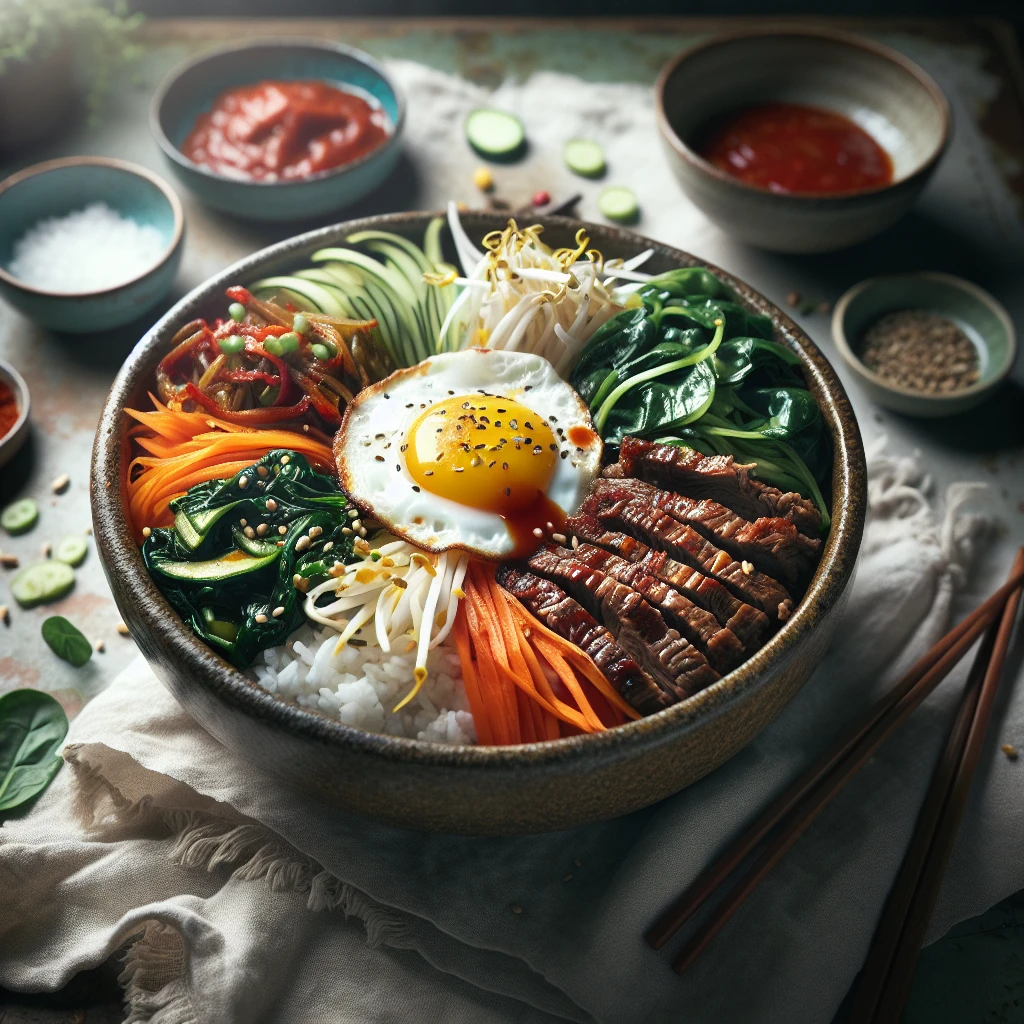
Bibimbap is a vibrant and flavorful Korean dish that brings together a medley of colorful vegetables, savory beef, and a perfectly runny egg all atop a bowl of warm rice. It's a feast for both the eyes and the taste buds, making it a perfect meal for any occasion.
Let's talk about what makes each ingredient shine in this dish. Starting with the rice, it acts as the comforting base, soaking up all the delicious flavors from the other components. The ground beef adds a hearty and savory element; we season it with soy sauce and sesame oil for depth. Garlic brings its classic pungency that enhances the beef. As for the vegetable oil, it's our trusty cooking medium for browning and sautéing.
Moving on to the veggies, spinach and bean sprouts add freshness and a bit of crunch, seasoned lightly with sesame oil for that nutty flavor. Carrots offer sweetness and vibrant color, while shiitake mushrooms introduce an earthy, umami taste. Cucumber slices provide a refreshing, crisp contrast.
Eggs bring richness and a creamy texture when mixed into the bowl. Gochujang sauce is the spicy, complex condiment that ties everything together, and sesame seeds sprinkle a final touch of nuttiness. Lastly, a bit of salt and pepper ensures everything is perfectly seasoned.
Pair your bibimbap with a side of kimchi for an authentic Korean experience. A simple miso soup or a light cucumber salad would complement the dish well without overwhelming the flavors.
Start by cooking your rice. If you have a rice cooker, this is the perfect time to use it. Otherwise, follow your package instructions, and once done, keep it warm on the side.
Heat a tablespoon of vegetable oil in a skillet over medium heat. Toss in the minced garlic and stir until fragrant, then add the ground beef. Cook, breaking it up with a wooden spoon, until browned. Season with soy sauce and sesame oil, then transfer it to a bowl and set aside.
Let's move to the veggies. Blanch spinach and bean sprouts separately in boiling water for about 30 seconds each. Drain and rinse under cold water to stop the cooking process, then squeeze out any excess water. Toss each with a pinch of salt and a dash of sesame oil.
Now, julienne those carrots if you haven’t already, and sauté them in the same skillet until tender, then set them aside. Follow with the shiitake mushrooms, giving them a quick sauté until they're soft and flavorful.
For the final touch, fry your eggs sunny-side up in a clean skillet. You want the whites set and the yolks still runny, perfect for mixing into the bibimbap later.
Time to assemble! Start with a generous scoop of rice in each bowl. Arrange the vegetables and beef around the rice like a vibrant wheel of flavor. Top with the fried egg. Sprinkle with sesame seeds and drizzle with gochujang sauce. Encourage everyone to mix their bowl thoroughly to enjoy all the combined flavors and textures.